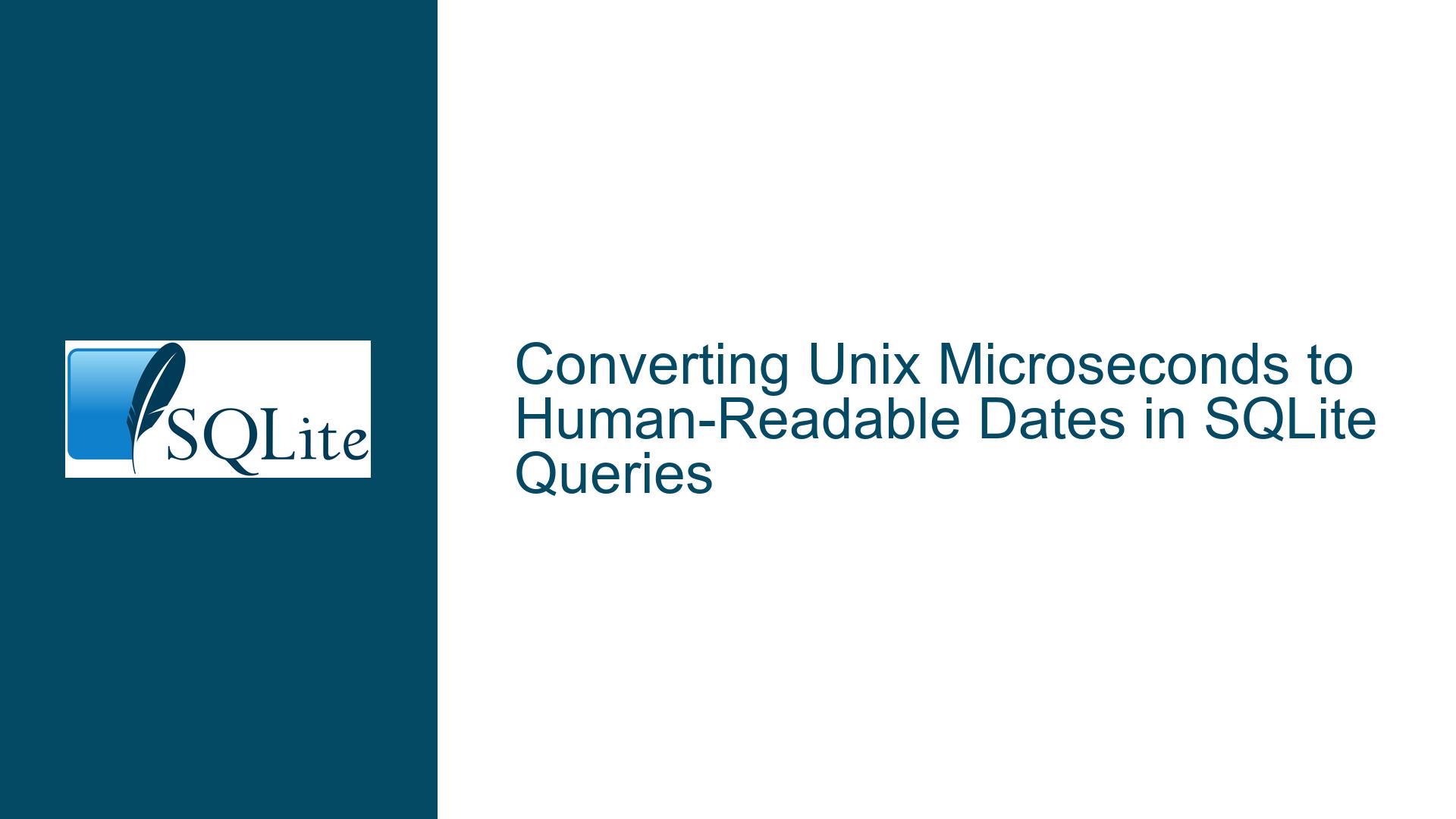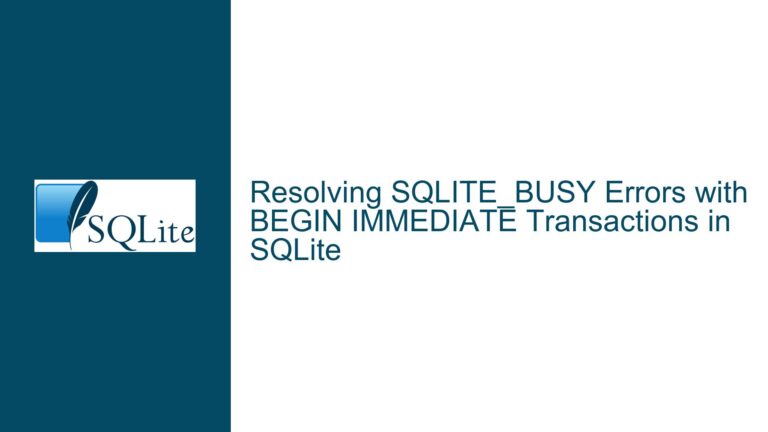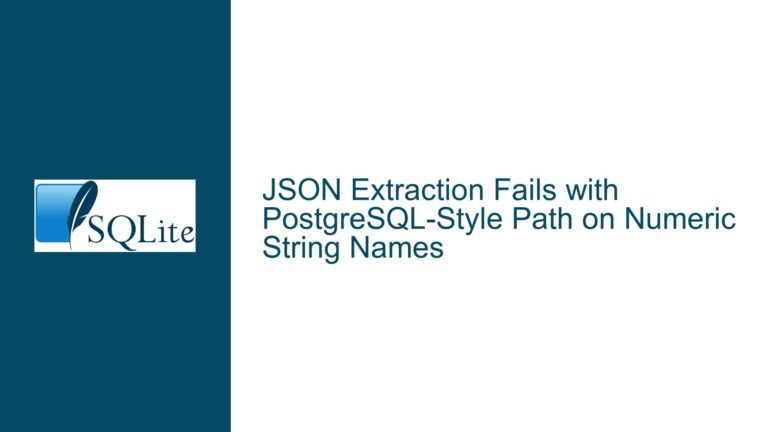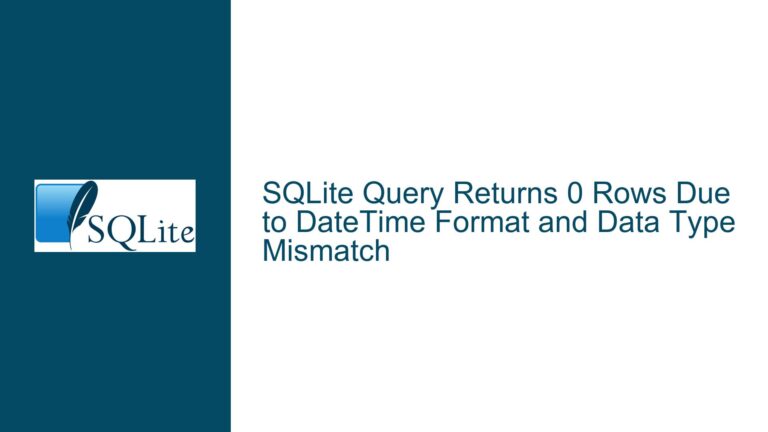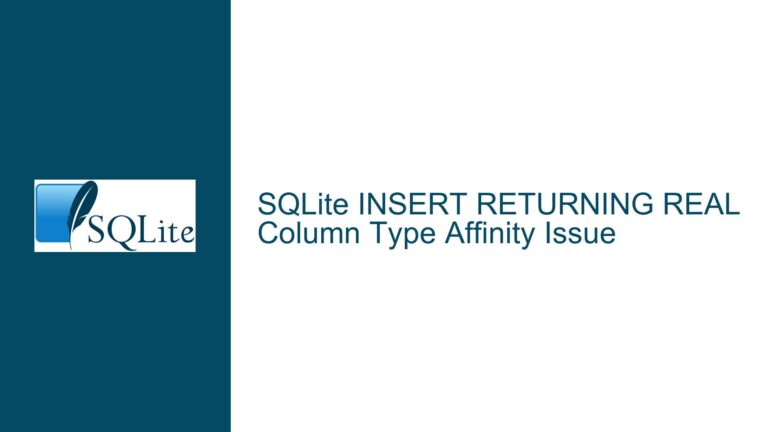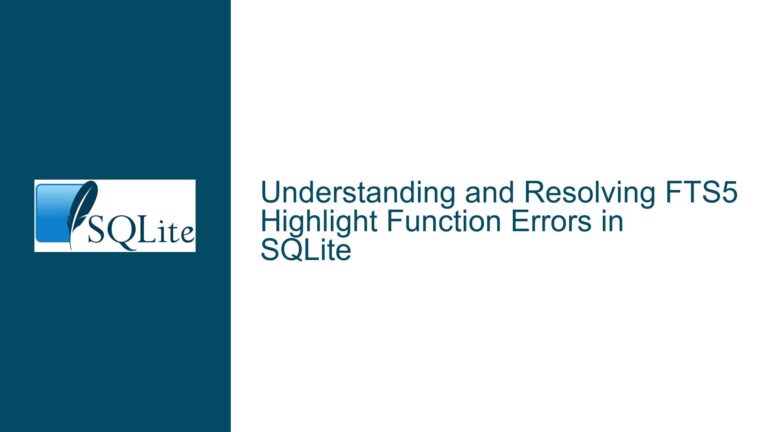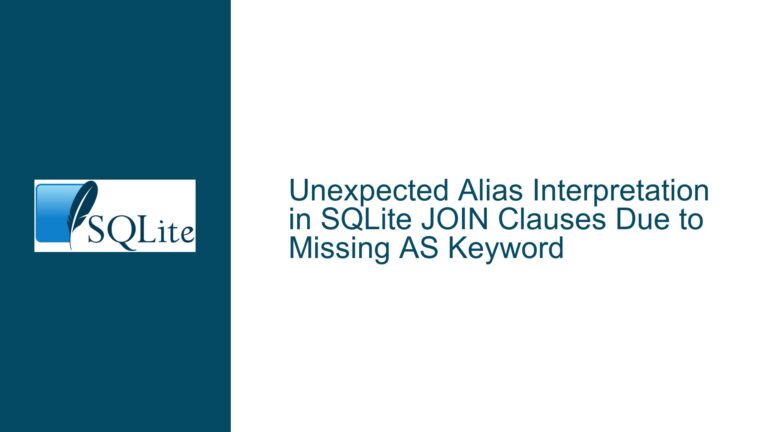Converting Unix Microseconds to Human-Readable Dates in SQLite Queries
Understanding the Problem: Unix Time in Microseconds and Date Formatting
The core issue revolves around querying a SQLite database (places.sqlite) used by Mozilla Firefox to store browsing history. The moz_places table contains a column named last_visit_date, which stores timestamps as integers representing Unix time in microseconds. The goal is to retrieve URLs visited within a specific year (2021) and format the last_visit_date column into a human-readable date string (e.g., 2021-06-15).
The initial query attempts to achieve this but fails to correctly handle the microsecond precision of the last_visit_date column. Additionally, the query’s BETWEEN clause excludes entries from the last day of the year due to a boundary condition. These issues highlight the need for a deeper understanding of SQLite’s date and time functions, as well as proper handling of Unix timestamps with microsecond precision.
Diagnosing the Issues: Microsecond Precision and Boundary Conditions
The primary challenges in this scenario stem from two specific problems: the handling of Unix timestamps in microseconds and the boundary conditions in the BETWEEN clause.
Microsecond Precision
The last_visit_date column stores Unix timestamps in microseconds, meaning each value is an integer representing the number of microseconds since the Unix epoch (January 1, 1970). SQLite’s strftime() function, which is used for date formatting, expects Unix timestamps in seconds. Passing a microsecond value directly to strftime() results in an out-of-range error, causing the function to return NULL.
Boundary Conditions in the BETWEEN Clause
The initial query uses a BETWEEN clause to filter records within the year 2021. However, the upper bound of the clause is set to strftime('%s','2021-12-31')*1000000, which corresponds to midnight on December 31, 2021. This excludes any records with a last_visit_date later than midnight on that day. For example, a URL visited at 10:00 AM on December 31, 2021, would not be included in the results.
Resolving the Challenges: Correcting Precision and Boundary Handling
To address these issues, the query must be modified to handle microsecond precision correctly and ensure that the BETWEEN clause includes all relevant records.
Handling Microsecond Precision
Since strftime() expects Unix timestamps in seconds, the last_visit_date values must be divided by 1,000,000 to convert microseconds to seconds. This adjustment ensures that the strftime() function receives a valid input and can generate the correct human-readable date string.
Adjusting the BETWEEN Clause
To include all records from the year 2021, the upper bound of the BETWEEN clause should be set to one microsecond before midnight on January 1, 2022. This ensures that any records with a last_visit_date up to 23:59:59.999999 on December 31, 2021, are included in the results.
Final Query
The corrected query incorporates both adjustments:
SELECT url, strftime('%m-%d-%Y', last_visit_date/1000000, 'unixepoch') AS last_visit_date
FROM moz_places
WHERE url LIKE '%www.somesite.net%'
AND last_visit_date BETWEEN strftime('%s','2021-01-01')*1000000
AND strftime('%s','2022-01-01')*1000000-1
Explanation of the Query
- Date Formatting: The
strftime('%m-%d-%Y', last_visit_date/1000000, 'unixepoch')function converts thelast_visit_datefrom microseconds to seconds and formats it asMM-DD-YYYY. - Microsecond Conversion: Dividing
last_visit_dateby 1,000,000 ensures that the value passed tostrftime()is in seconds. - Boundary Adjustment: The upper bound of the
BETWEENclause is set tostrftime('%s','2022-01-01')*1000000-1, which includes all records up to the last microsecond of December 31, 2021.
Optional Simplification
For readability, the factor of 1,000,000 can be replaced with 1e6:
SELECT url, strftime('%m-%d-%Y', last_visit_date/1e6, 'unixepoch') AS last_visit_date
FROM moz_places
WHERE url LIKE '%www.somesite.net%'
AND last_visit_date BETWEEN strftime('%s','2021-01-01')*1e6
AND strftime('%s','2022-01-01')*1e6-1
Potential Edge Cases
While the use of 1e6 simplifies the query, it introduces a theoretical risk of floating-point precision errors. However, this is unlikely to cause issues in practice, as the values involved are well within the range where floating-point precision is reliable. Nonetheless, for applications requiring absolute precision, using the integer 1000000 is recommended.
Best Practices for Working with Unix Timestamps in SQLite
- Understand the Precision: Always verify whether timestamps are stored in seconds, milliseconds, or microseconds. This determines how they should be handled in queries.
- Use
strftime()Effectively: Familiarize yourself with SQLite’s date and time functions, particularlystrftime(), which is versatile for formatting dates and times. - Handle Boundary Conditions Carefully: When using
BETWEEN, ensure that the upper and lower bounds are inclusive of the desired range. Adjustments like subtracting one microsecond can be necessary to include all relevant records. - Test for Edge Cases: Always test queries with edge cases, such as timestamps very close to midnight or at the boundaries of the range, to ensure accuracy.
- Consider Readability: While simplifying queries with scientific notation (e.g.,
1e6) can improve readability, be mindful of potential precision issues in critical applications.
By following these guidelines and understanding the nuances of Unix timestamps and SQLite’s date functions, you can effectively query and format date-related data in SQLite databases.
